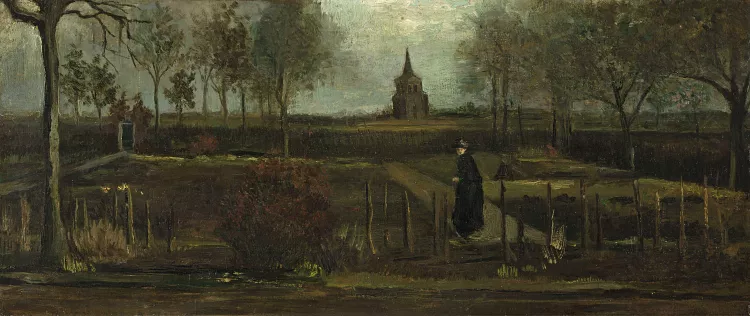The Best Known And Favorite Magic Mushrooms. Magic mushrooms are best known for their psychedelic effects. But did you know that there are also benefits to taking psilocybin, the psychoactive substance that is abundantly present in magic mushrooms? You can choose from many different types of magic mushrooms, each with its own specific effect. Meet our most popular magic mushrooms!
Contemporary pop culture has given magic mushrooms a reputation primarily as a recreational drug. But recent research shows that psilocybin also has positive effects. It was discovered, for example, that test subjects who used the mushrooms for a while were able to empathize better with others. They also felt more connected to other people.
Like cannabis, magic mushrooms cannot be compared to other recreational drugs because they are much safer. First, mushrooms are 100% natural, so you don’t have to worry about synthetic additives, as long as you know where the mushroom comes from. As for diversity, experts have found that there are hundreds of different species. Are you considering buying a magic mushroom grow kit ? Then the extensive range can overwhelm you. That’s why Zamnesia has put together an overview of the most popular varieties.
The Best Known And Favorite Magic Mushrooms
PSILOCYBE CUBENSIS
Common names: ‘Earle’, ‘Singer’
This mushroom is found in Central America, Mexico and the Gulf Coast region of the US and grows singly or in groups on dung, and is mainly found in livestock pastures. It can grow to about 20 cm high and develop a broad yellowish stem topped with a dirty yellow to brown cap. The hat can be about 10 cm wide and is oval shaped. The stem is about 4-5 cm long and 0.4-1.5 cm thick. Psilocybe cubensis often thickens and has a dry, white or yellow color. The stem transitions smoothly into the thick-walled hymenium, a dark purple-brown print about 11-17 by 7-12 microns. The spore prints are smooth and elliptical. The gills have white edges and a deep purple to black color. The mushroom is hallucinogenic and can be very dangerous if consumed in large quantities. There is no danger of overdosing, but the effects can be dangerously unpleasant, long lasting and strong.
PSILOCYBE AZURESCENS
Common names: ‘Stamets’, ‘Gartz’
This mushroom can grow in southern Santa Cruz, California, but it doesn’t happen often. It is most common in the Astoria area of Oregon, but has spread further thanks to outdoor cultivation. The mushroom grows to a height of about 90-200 mm and has a stem that is on average 3-6 mm thick. Its grayish stem changes into a faded brown hat. The cap is about 30-100mm in diameter and grows like a sphere that eventually flattens out to a smooth surface as the mushroom ages. The Psilocybe Azurescens grows on wood chips or in sandy soils rich in organic waste. The mushroom causes the whitening of wood. Fruiting of this strain begins in late September and continues until temperatures drop below freezing, usually in mid/late November. The mushroom has a very bitter taste.
PSILOCYBE CYANESCENS
Common Names: ‘Wakefield’, ‘Wavy Cap’, ‘Blue Halo’
These mushrooms grow in small groups. Their pale yellow to white stems grow to 3-6 cm in length and wear a pale brown cap. The hat grows into a wavy, but flat surface that sometimes rises as time goes on. The cap is thin and becomes brittle as the mushroom ages. The stem is about 3-6 cm thick and is usually a bit wider at the base. Its silky surface turns blue after bruising and is very hairy. The cap of the mushroom has purple-brown spore prints. The hymenium is closed when the mushroom is still young, but opens when it gets older. The caps are cinnamon brown but darken with age and become speckled with spores. They have been found in England in groups of over 100,000 mushrooms, but they have also been found in the Pacific Northwest. It has also been found in New Zealand and Western Asia. They ripen at low temperatures between 10 and 18 degrees Celsius, usually in the fall. The mushroom contains mild psychoactive ingredients, but they are not harmful to adults. Some people blanch them briefly to remove the psychoactive effect, but many find the taste too bitter for consumption.
PSILOCYBE MEXICANA
Common names: ‘R. Heim’, ‘Angelito’, ‘Chamaquillo (Little Boy in Spanish)’
This mushroom grows very small with a cap of 0.5 – 2 cm and is about 0.4 – 1.9 cm in size. Its thin stem has a dark green to brown color and changes into a bell-shaped light to dark purple cap. The rail carriers have a dark purple to brown color. This mushroom is usually found at an altitude of 1200 meters above sea level from southern Mexico to Guatemala. It is found in large quantities in limestone areas. Specimens of this species occur individually along roads, train tracks and in cornfields and moist areas. It is also found in some deciduous forests. They do not grow in groups. Fruiting begins in May and usually lasts until October. The Mexicana has psychoactive effects and has been used recreationally, as well as during religious ceremonies in Aztec communities.
PSILOCYBE TAMPANENSIS
Common Names: ‘The Philosopher’s Stone’
The Psilocybe Tampanensis originally grew in the Tampa Florida area in 1977, but has since been found only in Mississippi. The species found in Florida was cloned and its descendants are still widely circulating. It has a thin brown stem about 6 cm long that becomes lighter in color as it approaches the cap. The hat has the shape of an umbrella, is dark brown to purple in color and is about 1.2 – 4 cm in diameter. It has a smooth surface that can become slightly tacky when wet. The spore print is purple brown. This is a popular mushroom due to its mild to strong psychoactive effects, hence its name. This mushroom is extremely rare and its precise habitat is unclear. Some people say you can find it in sandy soils in the grasslands of Mississippi.
PSILOCYBE ATLANTIS
This mushroom has a brownish stem that is about 5 cm high and 3 cm thick. The stem has scales down to the bottom and wears a 4 cm hat. The cap is smooth and has a reddish brown surface, and the entire mushroom is bruised after damage. The mushroom has been found only in grassy lawns and empty areas in Fulton Country, Georgia, and in small amounts in Central Arkansas in wooded areas where livestock roam. Fruiting usually takes place at lower temperatures, for example in autumn. The mushroom is named after its location, which is near Atlanta, Georgia.
PANAEOLUS CYANESCENS
Common Names: ‘The Hawaiian’
This mushroom grows tall and develops a silky, white color. The stem is 7-12 long and wears a hat of 1.5-4 cm. The hat is very dry and often cracks open in dry weather. Panaeolus Cyanescens has a light brown color after germination and turns gray to white with age, sometimes with a yellowish tint. Its tracks are smooth and pitch black. This species grows in both hemispheres in tropical and neotropical forests. It has been found in Hawaii and in Africa, Australia, England, Asia, South America, but also in the south of the US. It has a psychoactive effect if you eat it.
PSILOCYBE SEMILANCEATA
Common Names: ‘Liberty Cap’
Psilocybe semilanceata is one of the most potent mushrooms containing psilocybin. Laboratory analyzes have established a level of psilocybin of up to 2.37% of the dry weight. These mushrooms also contain the alkaloid baeocystin, an analog of psilocybin, in a concentration of about 0.36%. This species is mainly found in grassy areas, where it grows abundantly in wetter areas with regular rainfall. People looking for liberty cap often get lucky on south-facing slopes fertilized by grazing livestock, such as cows and sheep. Although Psilocybe semilanceata is often associated with dung, it does not grow directly on animal feces. Instead, it is a saprophytic species that breaks down the roots of dead grass. Important features are the sharply conical to bell-shaped caps, with a diameter of 5-30mm. In addition, you often see pale brown to purple-brown gills, with a narrow to almost free attachment to the stem and a red to purple-brown spore print.
TRIP WISE
The strains listed above are among the most sought-after and most consumed psilocybin mushrooms. Many psychonauts report experiencing positive changes in their lives through the use of these fungi, but you should know that magic mushrooms are powerful drugs that should not be underestimated! If you are still unfamiliar with psychedelics, it is therefore wise to start with caution. Before you jump in at the deep end, it’s best to explore the world of microdosing first. Also use the Zamnesia dosage calculator to calculate the correct dosage. And if you feel the need to increase your dose, you can use the calculator again so you can take the next step with confidence.





















































